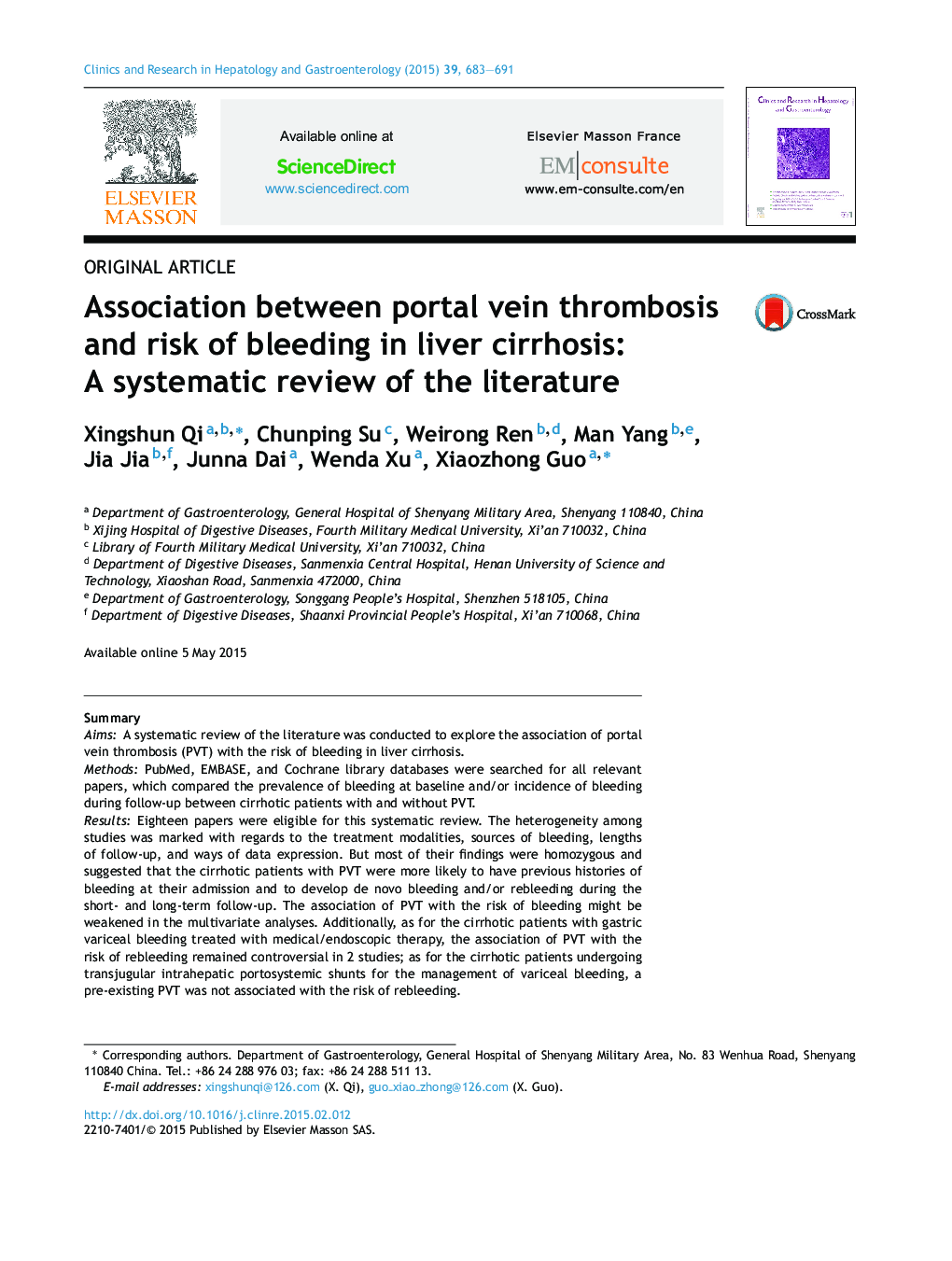| Article ID | Journal | Published Year | Pages | File Type |
|---|---|---|---|---|
| 3286046 | Clinics and Research in Hepatology and Gastroenterology | 2015 | 9 Pages |
SummaryAimsA systematic review of the literature was conducted to explore the association of portal vein thrombosis (PVT) with the risk of bleeding in liver cirrhosis.MethodsPubMed, EMBASE, and Cochrane library databases were searched for all relevant papers, which compared the prevalence of bleeding at baseline and/or incidence of bleeding during follow-up between cirrhotic patients with and without PVT.ResultsEighteen papers were eligible for this systematic review. The heterogeneity among studies was marked with regards to the treatment modalities, sources of bleeding, lengths of follow-up, and ways of data expression. But most of their findings were homozygous and suggested that the cirrhotic patients with PVT were more likely to have previous histories of bleeding at their admission and to develop de novo bleeding and/or rebleeding during the short- and long-term follow-up. The association of PVT with the risk of bleeding might be weakened in the multivariate analyses. Additionally, as for the cirrhotic patients with gastric variceal bleeding treated with medical/endoscopic therapy, the association of PVT with the risk of rebleeding remained controversial in 2 studies; as for the cirrhotic patients undergoing transjugular intrahepatic portosystemic shunts for the management of variceal bleeding, a pre-existing PVT was not associated with the risk of rebleeding.ConclusionsBased on a systematic review of the literature, there was a positive association between the presence of PVT and risk of bleeding in liver cirrhosis in most of clinical conditions. However, whether PVT aggravated the development of bleeding during follow-up needed to be further explored.
